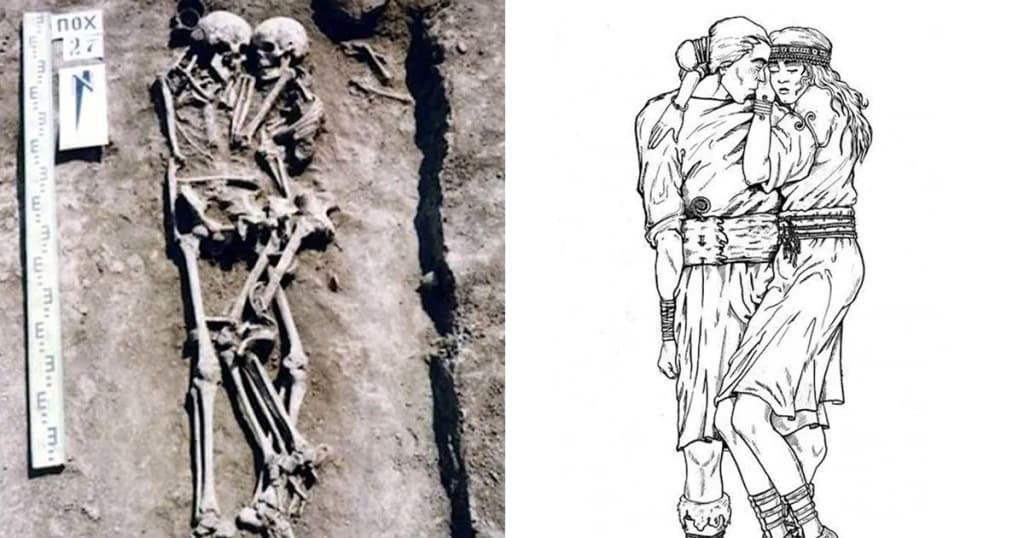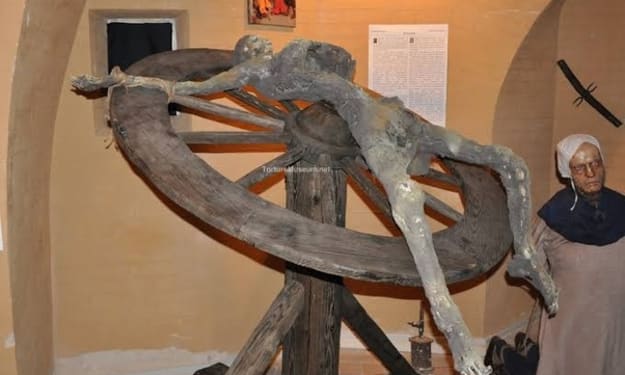Ancient Lovers: A 3,000-Year-Old Embrace Discovered in Ukraine
Old love

In a poignant reminder of the enduring power of love, archaeologists in Ukraine have unearthed the remains of an ancient man and woman locked in a loving embrace for 3,000 years. This extraordinary discovery near Petrykiv village, south of Ternopil in western Ukraine, offers a rare glimpse into the intimate and ritualistic practices of the prehistoric Vysotskaya—or Wysocko—Culture.
The Discovery
The burial site, unearthed by a team of archaeologists, revealed the skeletal remains of a man and a woman, their bones intertwined in a seemingly eternal embrace. The condition of the remains suggests that the couple were buried simultaneously, with the woman positioned in a manner that indicates she was willingly entombed alive to accompany her deceased husband into the afterlife.
Such a discovery is exceptionally rare and provides valuable insights into the burial customs and social dynamics of the Vysotskaya Culture, which flourished during the Late Bronze Age. This culture, known for its distinctive pottery and burial practices, inhabited regions of modern-day Ukraine, Poland, and Belarus.
The Vysotskaya Culture
The Vysotskaya Culture, dating back to around 1100–700 BCE, is characterized by its unique ceramic styles, fortified settlements, and complex social structures. The people of this culture practiced both inhumation (burial) and cremation, with grave goods often accompanying the deceased to signify their social status and beliefs about the afterlife.
The discovery near Petrykiv adds a deeply personal dimension to our understanding of this ancient society. The joint burial of the couple suggests a profound spiritual or ritualistic significance, indicating that beliefs about life, death, and the afterlife were central to their culture.
The Loving Embrace
The positioning of the bodies in a loving embrace is not only a testament to the couple's bond but also a reflection of the cultural and spiritual practices of the time. The woman's decision to be entombed alive is a dramatic illustration of the depth of their connection and the societal expectations placed upon individuals in the Vysotskaya Culture.
Archaeologists believe that such practices were part of a broader tradition in which individuals, often women, would voluntarily accompany their deceased partners into the grave. This act, while shocking by modern standards, was likely seen as a noble and honorable gesture, ensuring that the couple would remain united in the afterlife.
The Archaeological Significance
This discovery is significant not only for its emotional impact but also for its archaeological value. The well-preserved state of the remains allows for detailed analysis, providing insights into the health, diet, and lifestyle of the individuals. Additionally, the grave goods and artifacts found at the site can shed light on the material culture and technological advancements of the Vysotskaya people.
The careful excavation and study of the site will enable archaeologists to piece together the broader context of the burial, offering clues about the social hierarchy, gender roles, and spiritual beliefs of this ancient society.
Broader Implications
The discovery of the embracing couple adds to a growing body of evidence that prehistoric societies had complex social structures and deeply held spiritual beliefs. Similar finds, such as the "Lovers of Valdaro" in Italy and the "Hasanlu Lovers" in Iran, suggest that the expression of love and companionship in death was a widespread phenomenon across different cultures and time periods.
These discoveries challenge the often simplistic views of prehistoric peoples as purely survival-focused and highlight the emotional and spiritual dimensions of their lives. They remind us that the desire for connection and the fear of separation are timeless aspects of the human experience.
Conclusion
The ancient couple found near Petrykiv village in Ukraine, locked in a loving embrace for 3,000 years, offers a touching and profound glimpse into the past. Their story is a testament to the enduring power of love and the complex cultural practices of the Vysotskaya Culture. As archaeologists continue to study and interpret this remarkable find, we gain a deeper appreciation for the humanity of our ancestors and the ways in which they sought to navigate the mysteries of life and death.
In a world where so much remains uncertain, the discovery of this ancient embrace serves as a poignant reminder that love, in all its forms, transcends time and endures through the ages.
About the Creator
Enjoyed the story? Support the Creator.
Subscribe for free to receive all their stories in your feed. You could also pledge your support or give them a one-off tip, letting them know you appreciate their work.






Comments
There are no comments for this story
Be the first to respond and start the conversation.